Reconstruction of original content of the kurgan funeral vessels based on microbial and enzymatic parameters
Автор: Kashirskaya N.N., Khomutova T.E., Dushchanova K.S., Fornasier F., Kovalev D.S.
Журнал: Нижневолжский археологический вестник @nav-jvolsu
Рубрика: Статьи
Статья в выпуске: 1 т.22, 2023 года.
Бесплатный доступ
The original content of ritual vessels from the burials of the two kurgan cemeteries was reconstructed using the multisubstrate testing system of microbial respiration and enzymatic activity of the soil from the pots. For this purpose, a laboratory model experiment was conducted and the decomposition of protein, lipid and polysaccharide organic materials was studied. Basing on the results of the model experiment, most indicative enzymes produced by soil microbial community under decomposition of each type of organic materials were found. They were nonanoate esterase, alkaline phosphatase, acid phosphatase, and leucine- aminopeptidase. The results of the assessment of enzymatic activity made it possible to reconstruct the original contents of burial vessels from two burial mounds “Beysuzhek-35” (Bronze Age) and “Spokoynyy” (Bronze Age and Early Iron Age). We found that most of the pots contained plant food. Animal proteins and fats were in three out of nine pots. One pot was empty or had water in it. In the male burials of the Yamnaya culture, ritual food in pots was more nutritious and included animal fats and proteins, while in the female burial in pots there was a plant starch and protein food. Multisubstrate testing of the respiratory responses of the soil microbial community and determination of the activities of the enzymes nonanoate esterase, alkaline phosphatase, acid phosphatase, and leucine-aminopeptidase are promising approaches to study the type of ritual food in the pots from ancient burials.
Короткий адрес: https://sciup.org/149143234
IDR: 149143234 | УДК: 641.46 | DOI: 10.15688/nav.jvolsu.2023.1.3
Текст научной статьи Reconstruction of original content of the kurgan funeral vessels based on microbial and enzymatic parameters
СТАТЬИ
DOI:
Ceramic pottery was human innovation emerged in Late Pleistocene [Craig et al., 2013, p. 351], since that time pottery fragments or whole vessels are found as artifacts in various archaeological contexts. An important task is the reconstruction of original content of funeral vessels found at excavations of burial mounds (kurgans) attributed to different archaeological cultures for better understanding not only consumer, but also past rite-spiritual human life.
Generally, for reconstructions of original content of pots a variety of approaches was developed that include assessment of phosphate content [Demkin et al., 2014, p. 148], archaeobotanic [Peto et al., 2013, p. 58], biochemical [Kučera et al., 2018], isotopic [Reber, Evershed, 2004, p. 399; Morton, Schwarcz, 2004, p. 503], microbiological [Feng et al., 2021, p. 101365; Liu et al., 2022, p. 1] and other methods [Craig et al., 2004, p. 613; Borisov et al., 2006, p. 376; Alexandrovsky, Alexandrovskaya, 2007; Barnard et al., 2007a, p. 1; Craig et al., 2011, p. 17910; Isaksson, Hallgren, 2012, p. 3600, etc.].
In recent years, much attention is paid to study of traditional ethnic food and alcoholic drinks, whose technologies originate from ancient times [Bassi et al., 2020, p. 93; McHugh et al., 2021, p. 49; Wang et al., 2021, p. e0255833; Liu et al., 2022, p. 1].
It is known that fermentation of traditional products is carried out by yeast, lactic acid and acetic acid microorganisms [Guerra et al., 2022, p. 1854] and is not complete without lipolytic microorganisms [Meghwanshi, Vashishtha, 2018, p. 383; Negi, 2019, p. 181; Salgado et al., 2021, p. 101509]. Vessels from ancient burials may contain well-preserved microorganisms associated with the food technologies. For example, yeast cultures similar genetically to yeast in traditional African beverages were isolated from clay pots of the Bronze Age [Aouizerat et al., 2019, p. 1]. Lactic acid bacterium Lactobacillus coagulans was isolated from the burial clay pot of the Bronze Age [Demkina et al., 2019, p. 631]. However, living microorganisms associated with the food products are preserved in ceramics rarely. Therefore, for the most ancient objects, effective methods of reconstructing dairy food in vessels are the search for genes encoding milk proteins, lipid analysis [Salque et al., 2013, p. 522] or proteomic analysis [Yang et al., 2014, p. 178]. These methods make it possible to establish the original purpose of the vessels for cottage and cheese technologies. In addition, enzyme immunoassay is used, which for the first time revealed the presence of milk proteins in ceramic vessels of the Eneolithic era [Kučera et al., 2018, p. 3247].
A large number of studies of the original contents of ancient vessels are devoted to the identification of alcoholic beverages. There is evidence of early Neolithic wine production in the Caucasus [Harutyunyan, Malfeito-Ferreira, 2022, p. 788] and red beer production in China [Feng et al., 2021, p. 101365; Liu et al., 2022, p. 1]. For the production of this beer by analyzing microfossils of starch, phytoliths and mushrooms, the use of a variety of plant ingredients and mold fungi has been proven [Liu et al., 2020, p. 1]. The earliest evidence of the use of leaven for fermentation in the production of alcoholic beverages predated the appearance of writing in China by 8000 years [Wang et al., 2021, p. e0255833]. Over the centuries, vessels for fermentation and storage of beer have morphologically evolved from spherical jugs to amphorae, accompanied by an increase in size and shape optimization [Liu, 2021, p. 101310].
Archaeological vessels are associated not only with food. For example, studies of ancient aromatic, cosmetic and medicinal products can be carried out in such rare vessels as incense burners or perfume bottles. Here, paleo-metabolomics is a promising direction, with the help of which traces of aromatic plants and plant products that were used in the past as incense, cosmetics, and medical products are identified [Huber et al., 2022, p. 611]. For human DNA studies, the contents of Egyptian ritual vessels (canopic jars) to store entrails in preparation for mummification in ancient Egypt were used [Rayo et al., 2022, p. 307].
In all cases, a complex of natural science methods and additional archaeological and historical data [Barnard et al., 2007b, p. 28] is needed to establish the source of organic residues in ceramics or the soil of the vessel filling. At the same time, the analysis of the contents of ceramics refers to the utilitarian period of the vessel’s existence, when it was used as everyday utensils, and soil-microbiological methods allow us to reveal the ritual stage of the vessel’s functioning when it was left in the burial, where it was subsequently filled with soil-soil material [Chernysheva et al., 2021, p. 105]. Under the conditions of burial, microbial communities persist for an indefinite time, due to the transition of cells to a dormant state, while a significant proportion of the buried soils are sufficiently stable groups of microorganisms associated with human activity [Khomutova, Borisov, 2019, p. 104004]. Mixing a food product with soil in the process of filling a vessel can stimulate the development of a soil microbial complex that produces enzymes for the utilization of organic substrates [Kashirskaya et al., 2021, p. 7].
For a reasonable reconstruction of original content of funeral vessels, a model laboratory experiment for decomposition of organic materials under controlled conditions was performed [Khomutova et al., 2019, p. 963; Khomutova et al., 2020, p. 188]. In this experiment topsoil samples were amended by one of organic materials of protein, lipid, and polysaccharide nature, the dynamics of decomposition of these materials and functional diversity of microbial communities was studied.
The functional diversity of microbial communities was estimated using the system of multisubstrate testing (MST). For that various low-molecular inducers of microbial respiratory activity (carbohydrate, amino acid, and carboxylic acid classes) were introduced into the soil from each variant of the experiment. It was found that the respiratory responses to ascorbic, acetic, and lactic acids, as well as cysteine are strongly correlated with type of the organic substrate which has been added to the soil [Khomutova et al., 2019, p. 963]. The ratio of respiratory responses to introduction of ascorbic acid to that of acetic (AA), lactic (AL) and cysteine (AC) was high in variants amended by proteins and low – in variants amended by nitrogen-free materials (lipids and polysaccharides) that was proposed to be promising for the purposes of reconstruction of the former content of the vessel.
The aim of this work was to analyze enzymatic activity of soils in the same model experiment. We supposed that adding different food substrate will led to increasing activity of some enzymes involved in decomposition of the food. As a result, we may identify most indicative enzymes which reflect the initial content of the pots. Basing on the results of the model experiment it was aimed to reconstruct the original content of funeral vessels found in kurgans of different archaeological cultures.
Objects and measurements
Archaeological objects
The vessels of two archaeological sites were studied. The location of archaeological sites is given in Fig. 1.
First object was vessel found in kurgan 6 burial 8 of the kurgan cemetery “Beysuzhek-35” (Northern Precaucasus). The burial is archaeologically dated back to the Catacomb culture of the Middle Bronze Age (about 2600– 2300 yrs. BC, Fig. 2).
Five samples of the soil-ground material were taken aseptically from the vessel from its halo to the bottom and kept at moisture and temperature conditions similar to the moment of sampling.
Second object was kurgan 9 of the kurgan cemetery “Spokoynyy” (Crimean Peninsula). There were several burials dated back to different cultures (Table 1).
The vessels were mainly ornamented (Fig. 3), made of clay with admixture of quartz, in some cases with addition of organic matter. The height of vessels varies from 6 to 15 cm with maximal diameter of 9–18 cm (at the upper part of 8.3–15 cm, and at the bottom of 5.4–9.8 cm).
Soil from vessels was taken aseptically from the halo and the bottom of the vessels and kept at moisture and temperature conditions similar to the moment of sampling.
Brief design of the model experiment
The detailed description of the experiment was published earlier [Khomutova et al., 2019, p. 963]. Briefly: gray forest soil taken from the upper horizon (0–10 cm) was separated from the root residues, sieved (2 mm), divided into eight portions (variants), each of 1 kg, and moistened to 60% WHC. Each variant was amended (1.9% w/w) by one of the sterilized organic materials – casein, gelatin, wool (protein group), sunflower oil, sheep fat (lipid group), starch, plant residues (polysaccharide group). The control variant was soil without amendment. All soils were kept at constant moisture and temperature (25 оС) during two years. The subsamples (1g,) from each variant were taken for measurements.
Measurements
The enzyme activities were determined using a protein for desorption of enzymes (heteromolecular exchange) [Fornasier, Margon, 2007, p. 2682] in extracts of soils of model experiment and soil-ground material from the vessels. The procedure used was similar to the one described in Cowie et al. [Cowie et al., 2013, p. 707], with minor modifications. Remarkably, the very low amount of soil sample required, the speed of the assay, the low cost of the consumables, and the very high throughput (approximately 50 times faster than assays performed in test tubes with chromogenic substrates) makes this technique a promising tool for the rapid, sensitive, and inexpensive biochemical characterization of archaeological samples.
The activities of the following enzymes (nmol MUF per gram of dry soil per hour) were determined: α -glucosidase (EC 3.2.1. 20), β -glucosidase (EC 3.2.1. 21), α -galactosidase (EC 3.2.1. 22), β -galactosidase (EC 3.2.1. 23), α -mannosidase (EC 3.2.1. 24), β -mannosidase (EC 3.2.1. 25), cellulase (EC 3.2.1. 4), xylosidase (EC 3.2.1. 37), cellobiohydrolase (EC 3.2.1.91), glucuronidase (EC 3.2.1.31, chitinase (EC 3.2.1. 14), leucine-aminopeptidase (EC 3.4.11.1), arylsulfatase (EC 3.2.1. 2.1), acid phosphomonoesterase (EC 3.1.3.2), phosphodiesterase (EC 3.1.4), pyrophosphate-phosphodiesterase (EC 3.6.1.9), alkaline phosphomonoesterase (EC 3.1.3.1), and nonanoate esterase (EC 3.1).
Multisubstrate testing of respiratory activity of microorganisms (MST) was performed according to Degens and Harris [Degens, Harris, 1997, p. 1309]. Previously in the model experiment the microbial respiratory response to introduction of the ascorbic, lactic, acetic acids and cysteine were shown to be specific in respect to decomposition of organic materials of different nature. In this study these low-molecular compounds were applied for the MST measurements of the soil-ground material of the vessels in the following concentrations: ascorbic acid – 100 mM, lactic acid 160 mM, acetic acid – 190 mM, cysteine – 15 mM. All solutions were adjusted to pH 6–7 with 1 N NaOH. The subsamples of 1 g were placed into tubes with rubber caps, incubated for 12 h at 22 oC, ventilated, then 200 µl of one of mentioned compounds was added, the vessels were closed and after incubation (4 h, 22 oC) measured for the CO2 development using the gas chromatograph (Cristallux 4 000 M, IPBP Analytical center facilities). The activity was calculated as µg C / g soil hour.
For each vessel, the values determined for the halo were subtracted from that determined for the bottom layer and expressed as per cents, the differences in activities of each enzyme were expressed as per cent of the summed up values of all enzymes. All measurements were performed at least in three replicates, statistically processed, the principal component and cluster analyses were performed in the STATISTICA program.
Results and discussion
Enzymatic activity in the model experiment
From the data on enzymatic activity, variants of the model experiment formed several groups in accordance with nature of organic materials introduced (Fig. 4): lipid variants formed the most isolated group, plant residues and wool were the closest to control, a separate group was formed by easily degradable casein and gelatin; starch, remaining in the same cluster with control, remained aside.
Analysing the activity and standard deviations from the mean among 17 enzymes measured, four – nonanoate esterase, alkaline and acid phosphatase, and leucine-aminopeptidase were the most indicative for the organic materials introduced to soil (Fig. 5). The activity of these four enzymes was analyzed in the soil-ground material from the funeral vessels and compared to that of the model experiment using the principal component analysis.
Reconstruction of the content of the pot 6 burial 8 kurgan cemetery
“Beysuzhek-35”, basing on the MST indicators and enzymatic activity of soil
During multisubstrate testing of respiratory activity of microbial communities (MST) in the model experiment, it was shown previously that indicative for the nature of the decomposed materials were the ratios of respiration responses to introduction of ascorbic acids to acetic acid (AA), to lactic acid (AL), and to amino acid cysteine (AC).
The MST results of five soil layers from the vessel taken from the kurgan cemetery “Beysuzhek-35” are shown in Fig. 6. The distribution of living microbial biomass in the filling of the vessel measured from the glucose-induced respiration (Fig. 6B), shows that at the bottom of the vessel it was 2.2 times higher than at the halo, and by 57–62% higher than in the middle part of the vessel. Ratios AA, AL, and AC unidirectionally increased from the halo towards the bottom (Fig. 6A). It can be assumed that the initial filling of the vessel was a substance of protein nature.
Statistical processing of data of enzymatic activity in the soil of this vessel and comparison with the data of model experiment is given in Fig. 7 (most indicative enzymes: acid (ac P) and alkaline (alk P) phosphatases, leucine-aminopeptidase (leu), nonanoate-esterase (nona). Principal component analysis clarified the position of the bottom layer in the plane of two components. In the F1 (factor 1) coordinates describing 40% of the dispersion, the bottom layer is located in the half-plane with fat and protein variants, and in the F2 (factor 2) coordinates describing 39% of the dispersion, it occupied an intermediate position between the fat and protein variants.
Reconstruction of the content of funeral vessels from the kurgan 9 of the burial mound “Spokoynyy”, based on the enzymatic activity of soil-ground material
Comparison of the data of enzymatic activity of soil-ground material from the vessels found in the burial complex “Spokoynyy” with the results of model experiment allowed us to make rough reconstructions of their original contents. Principal component analysis showed the positions of vessels in the plane of two components (Fig. 8).
In the F1 (factor 1) coordinates describing 47% of the dispersion, vessel 9-20-1 stays aside from both all other vessels and control. This pot evidently was either empty or with water.
Pots 3-1, 9-16 and 9-17 are close to polysaccharide experimental variants (plant residues and starch). Vessel 9-3-1 was closest to the plant residues. There is a high probability that this pot contained plant food. Vessels 9-16 and 9-17 were grouped with a starch variant. Pot 9-7 is in an intermediate position between polysaccharide and variants of proteins. Pots 9-3-2 and 9-20-2 were closest to the variants of proteins, and the vessel 9-20-3 was closest to the variants of fats. Thus, the results of this analysis allow us to reconstruct the original contents of vessel 9-20-3 as fat – containing food, 9-20-2 and 9-3-2 as high-protein food, 9-20-1 as an aqueous solution with a low nutrient content, and the remaining vessels as vegetable food with a moderate protein and starch content.
Conclusions
The model laboratory experiment performed for studying the decomposition of organic materials of protein, lipid, and polysaccharide nature helped to reconstruct the original content of funeral vessels of various archaeological cultures. Analyzing the enzymatic activity in the model experiment four enzymes – nonanoate esterase, alkaline and acid phosphatase, and leucineaminopeptidase were found to be most indicative for the type of organic materials decomposed in the soil. Basing on the results of the model experiment – enzymatic activity and the multisubstrate testing of the respiratory response of microbial communities the initial content of funeral vessels from two burial complexes were reconstructed.
In the vessel of the kurgan cemetery “Beysuzhek-35” the initial content was reconstructed as fatty-meat.
In kurgan cemetery “Spokoynyy” one of vessels (No. 9-20-1) was either empty or with water. Three vessels contained plant starchy-protein material (No. 9-3-1, 9-16, 9-17, No. 9-7). Two vessels (No. 9-3-2 and 9-20-2) had animal protein food.
It is remarkable to note that in two burials of the same archaeological culture (Yamnaya culture, 2600–2300 yr. BC); funeral food in male and female burials was different. In the male burial, one pot contained animal protein food (No. 9-20-2), and another (No. 9-20-3) contained animal lipid food. Other funeral food was in the female burial: the pot 9-3 1 contained plant-starchy material and another one 9-3-2 contained animal protein food. Another difference between these two burials was the presence of a third pot of water (or empty) in the male burial (No. 9-20-1). The pot from the child burial of the Srubnaya culture (No. 9-16) and the pot from the Kizil-koba culture cenotaph (700– 400 yrs. BC) contained plant starchy material.
Multisubstrate testing of the respiratory responses of the soil microbial community and determination of the activities of the enzymes nonanoate esterase, alkaline phosphatase, acid phosphatase, and leucine-aminopeptidase are promising approaches to study the type of ritual food in the pots of their burials.
NOTE
1 The work is supported by Russian Science Foundation, grant 22-28-01725: Soil-Microbiological, enzymological and molecular biological approaches to the identification of food in vessels from burials.
APPENDIX
Table 1. Characterization of burials and vessels from kurgan 9 of the kurgan cemetery “Spokoynyy”
|
No of sample |
No of burial |
Anthropological data |
Archaeological culture |
Dates |
|
9-3-1 |
3 |
Female, over 50 yrs. old |
Catacombnaya culture |
2600–2300 ВС |
|
9-3-2 |
||||
|
9-17 |
17 |
Male, 40–45 yrs. old |
Catacombnaya culture |
2600–2300 ВС |
|
9-20-3 |
20 |
Male, 30–35 yrs. old |
Catacombnaya culture |
2600–2300 ВС |
|
9-20-1 |
||||
|
9-20-2 |
||||
|
9-16 |
16 |
Child, 9–10 yrs. old |
Srubnaya culture |
1900–1600 ВС |
|
9-7 |
7 |
Cenotaph |
Kizil-koba culture |
700–400 ВС |
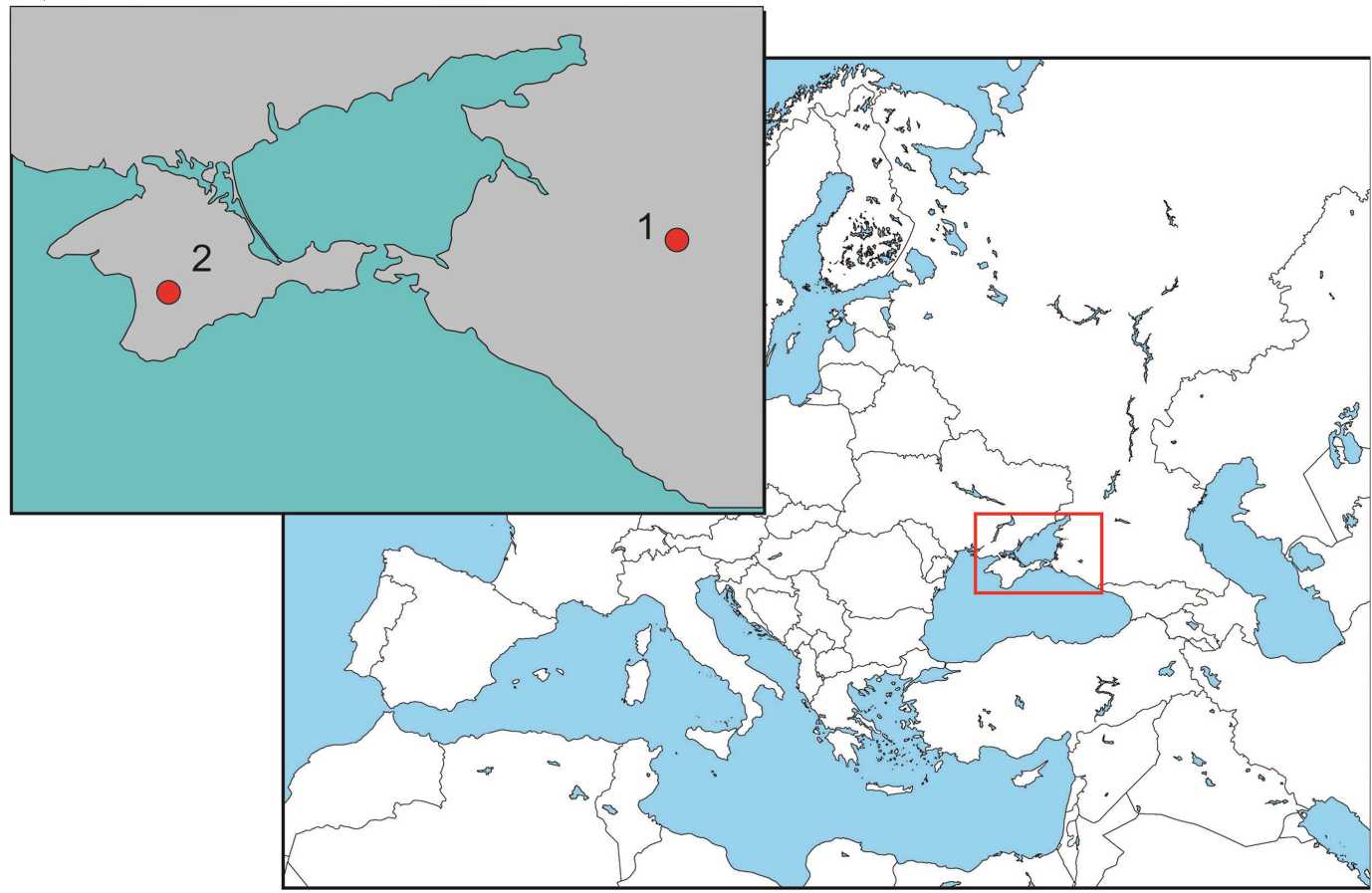
Fig. 1. Location of the archaeological sites:
1 – kurgan cemetery “Beysuzhek-35”; 2 – kurgan cemetery “Spokoynyy”
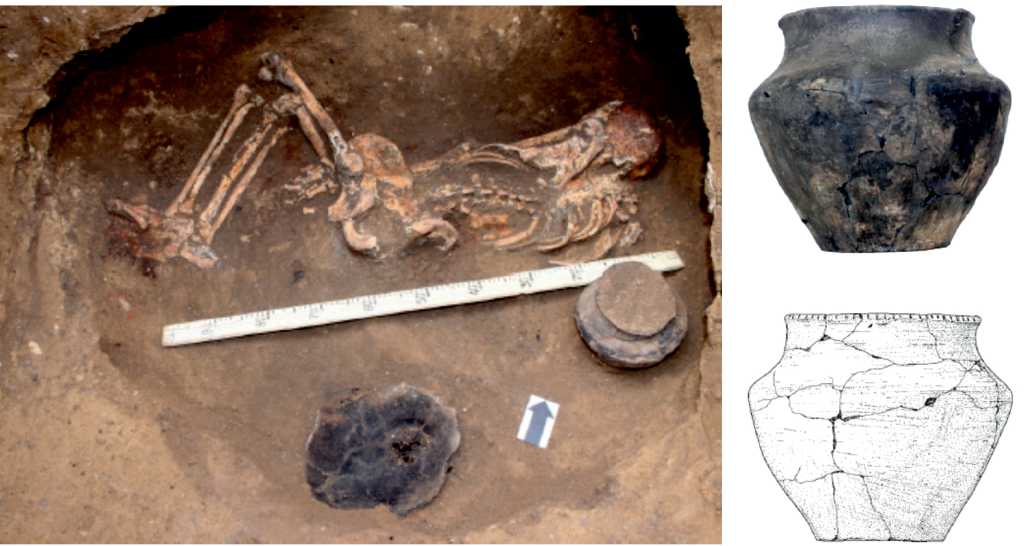
Fig. 2. The vessel found in the kurgan cemetery “Beysuzhek-35” (Catacomb culture), kurgan 6, burial 8

Fig. 3. The vessels found in the kurgan 9 of the kurgan cemetery “Spokoynyy”:
1 – burial 16; 2 – burial 3, find 1; 3 – burial 3, find 2; 4 – burial 17; 5 – burial 7;
6 – burial 20, find 1; 7 – burial 20, find 2; 8 – burial 20, find 3

Sunflower oil
Sheep fat
Sheep wool
Plant residues
Control
Casein
Gelatin
Starch
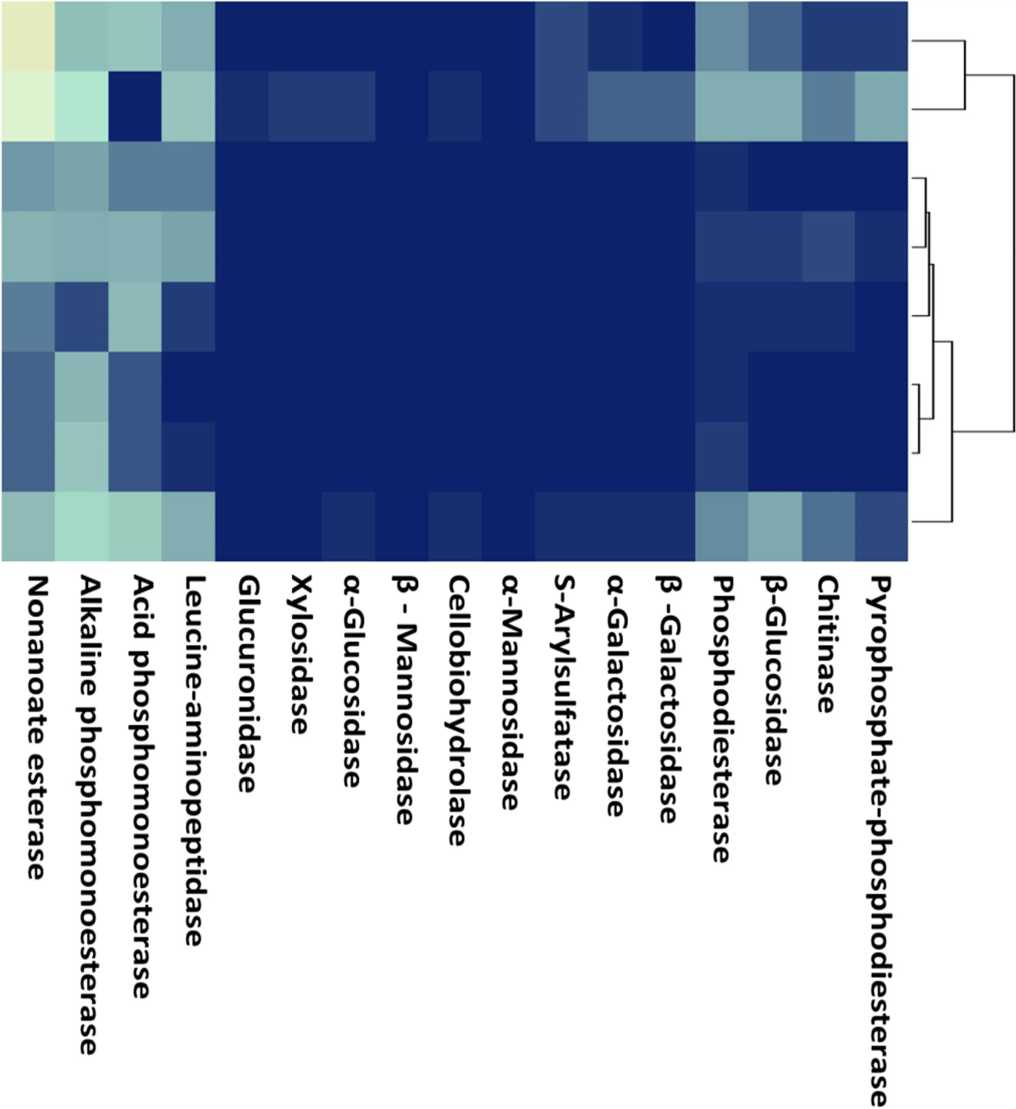
Fig. 4. Graphical result of the clustered heat map analysis (Euclidean distance) performed on the basis of the enzymatic spectra (17 enzymes) of the model laboratory experiment
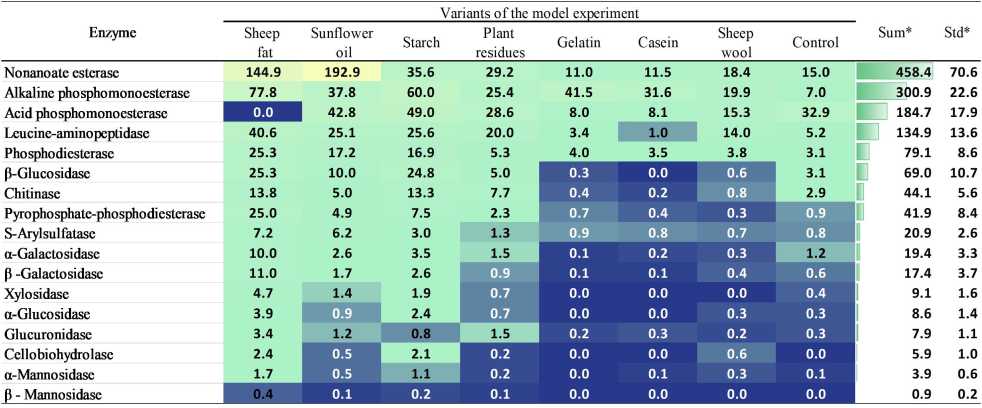
Fig. 5. Enzymatic activity in soils amended by various organic materials in the model experiment. * – Enzymatic activity for separated enzyme through all variants of the experiment
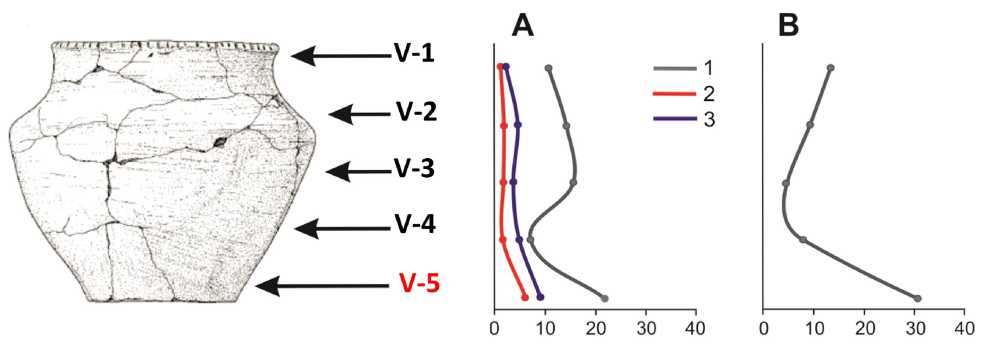
Fig. 6. Microbial respiration activity of soil in the vessel “Beysuzhek-35” in the multisubstrate system:
A – ratios of the respiration responses induced by ascorbic acid to that induced by cysteine (1), acetic acid (2), and – lactic acid (3); B – respiration response induced by glucose. V-1...V-5 – layers of analyzed soil
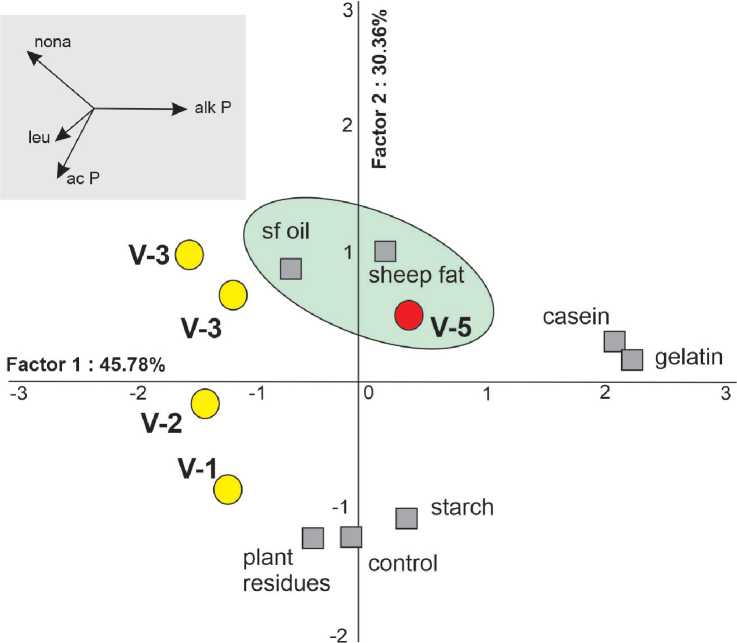
Fig. 7. Location of soil layers of the vessel “Beysuzhek-35” and variants of the model experiment basing on enzymatic activity (nonanoate esterase, leucine-aminopeptidase, alkaline and acid phosphatases) in the principal component coordinates
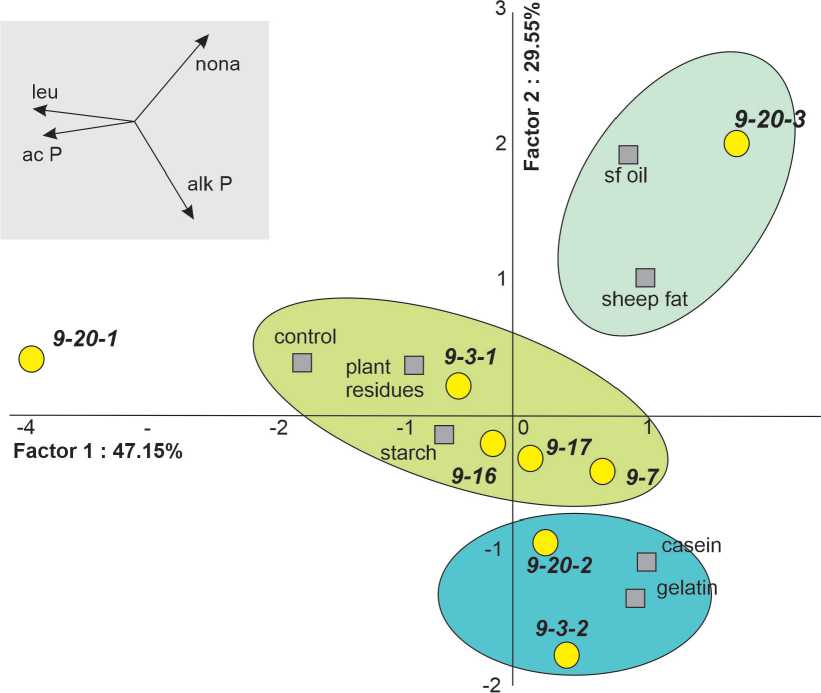
Fig. 8. Position of the vessels from the kurgan “Spokoynyy” and variants of the model experiment basing on enzymatic activity (nonanoate esterase, leucine-aminopeptidase, alkaline and acid phosphatases) on the plane of two components (principal component analysis)


